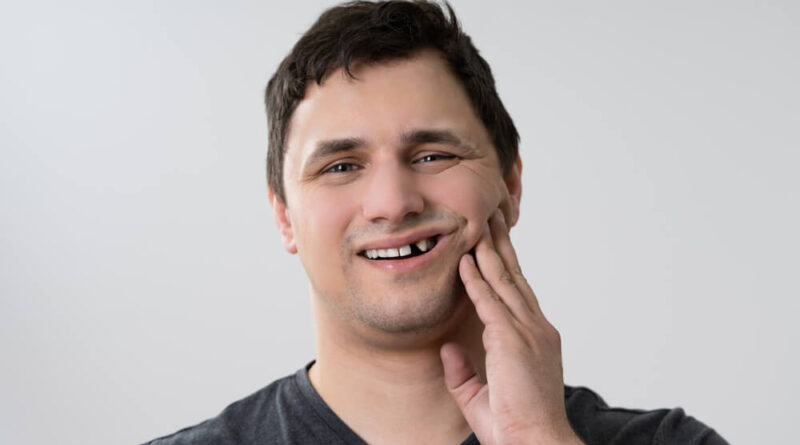Front Teeth Flipper Tooth After Extraction: What to Expect
If you’ve recently had your front teeth extracted, you might consider a front teeth flipper tooth as a temporary replacement. This simple yet effective dental appliance is a placeholder until a more permanent solution is available. This article will explore how a flipper tooth can enhance your smile and support your oral health during the transition. Stay tuned to understand the benefits and considerations of opting for a dental flipper tooth after front teeth extraction.
Introduction to Flipper Teeth: A Temporary Solution After Tooth Loss
Flipper teeth offer a practical and temporary solution to missing teeth for those who have experienced tooth loss, particularly after front teeth extraction. As a popular choice among dental prosthetics, flippers serve as an interim fix until a more permanent option is available.
Nature and Composition: Dental flippers are removable partial dentures made from acrylic dental-grade resin, designed to temporarily replace one or more missing teeth.
Advantages of Using Flipper Teeth: They are favored for quick preparation and cost-effectiveness. Lightweight and designed to fit snugly, they use existing teeth for support while preventing adjacent teeth from shifting.
Functional Benefits: Flipper teeth enhance the appearance of one’s smile and provide functional benefits, such as improved speech and the ability to chew food.
Immediate Placement: The simplicity of a flipper tooth allows for its immediate use after a tooth is extracted, offering cosmetic and functional benefits immediately.
Maintenance and Care: Despite their benefits, flipper teeth require careful maintenance, including regular cleaning with mild soap and a soft-bristle toothbrush to avoid damage to the prosthetic and the natural teeth surrounding it.
Flipper’s prosthetic teeth are an effective and attractive temporary solution for those awaiting permanent dental work after losing their front teeth. While they offer immediate improvements in appearance and function, patients need to consider their transitional nature and plan for a more durable replacement. Understanding the care and limitations associated with dental flippers can help patients make the most of this temporary prosthetic while maintaining oral health.
The Benefits of Choosing a Flipper Tooth for Front Teeth Replacement
Choosing a flipper tooth for front teeth replacement offers several benefits, particularly for those seeking a temporary solution post-extraction. Flippers provide an immediate aesthetic and functional replacement, making them popular among patients and dentists.
Cost-Effectiveness
Flipper teeth are among the most economical dental prosthetics available. This affordability makes them an accessible option for patients who may not have dental insurance coverage or are financially unprepared for the higher costs associated with more permanent solutions like dental implants or bridges.
Quick Fabrication
Flipper’s teeth have the advantage of rapid production. They can be designed and created within a few days, ensuring patients do not have to wait long periods without teeth. This is particularly beneficial for those concerned about their appearance or need to maintain normal speech and eating functions.
Ease of Adjustment and Repair
Flippers are relatively easy to adjust and can be quickly repaired if they break, offering convenience and reducing the likelihood of prolonged periods without a tooth replacement.
Non-Invasive Procedure
Unlike dental implants that require surgery, inserting a flipper tooth does not involve invasive procedures. This makes it a good option for patients who are hesitant about surgical interventions or have medical conditions that preclude invasive treatments.
Preservation of Surrounding Teeth and Tissue Structure
By filling the gap left by missing teeth, flipper teeth help maintain the alignment of the remaining teeth and prevent them from shifting. This preservation of the dental structure aids in maintaining oral health until a more permanent solution can be implemented.
How to Care for Your Flipper Tooth to Ensure Longevity
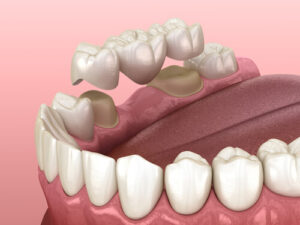
Proper care of a flipper tooth is crucial to extend its lifespan and maintain oral health. Here are detailed guidelines to ensure your flipper tooth remains functional and aesthetically pleasing for as long as possible.
Regular Cleaning
It’s essential to clean your flipper tooth daily to prevent plaque buildup and staining. Use a soft toothbrush and non-abrasive cleaner specifically designed for dentures. Avoid using regular toothpaste, which can be too harsh, and scratch the acrylic.
Handle with Care
Always handle your flipper tooth with care. When removing or inserting it, use gentle movements to avoid bending or breaking the delicate clasps or the acrylic base.
Soak Overnight
Soak the flipper tooth in a denture cleaning solution overnight when not in use. This helps keep it moist, prevents the material from warping, and ensures it is thoroughly cleaned and disinfected.
Avoid Hard and Sticky Foods
To prevent damage, avoid biting into hard or sticky foods with your flipper tooth. These kinds of foods may displace or harm the prosthetic.
Routine Inspections
Regular check-ups with your dentist are important to adjust the fit and address any wear and tear. As your mouth’s shape changes, the flipper may need adjustments to fit comfortably and securely.
Immediate Attention to Discomfort
If you experience discomfort or sore spots caused by the flipper tooth, consult your dentist immediately. Do not attempt to adjust the flipper yourself, as improper adjustments can lead to further damage or discomfort.
Potential Challenges and How to Overcome Them
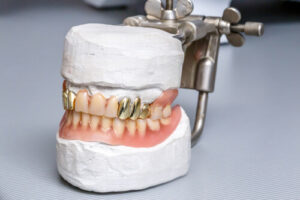
While flipper teeth provide a practical solution for temporary tooth replacement, users may encounter several challenges. Understanding these potential issues and how to address them effectively can help ensure a more positive experience with your dental flipper tooth first.
Discomfort and Irritation: New flipper teeth can sometimes cause soreness or irritation in the mouth. To mitigate this, visit your dentist for adjustments to improve the fit. Regularly applying dental wax to areas that rub against your gums can also reduce irritation.
Difficulty Speaking: You may need help to speak clearly with a new flipper tooth. Practice speaking and reading aloud to quickly adapt to the feel of the flipper in your mouth. This will help your tongue adjust to its presence and restore normal speech patterns.
Eating Adjustments: Eating with a flipper tooth can feel awkward, and certain foods might dislodge or damage it. Begin by eating soft foods and chopping them into tiny pieces. Slowly incorporate firmer foods as you grow accustomed to the flipper.
Maintenance and Cleaning: Maintaining cleanliness of a flipper tooth can be demanding but is essential for averting infections and unpleasant smells. It should be cleaned daily with a soft brush and a gentle, non-abrasive cleaning agent. Soaking it overnight in a denture cleaning solution can also help maintain hygiene.
Risk of Damage: Flipper teeth are fragile and break if dropped or handled carelessly. Always fill the sink with water or place a towel over the surface when handling your flipper tooth to cushion any accidental falls.
Long-Term Oral Health: Relying on a flipper tooth for too long can affect oral health, as it does not prevent bone loss in the jaw. Discuss long-term replacement options with your dentist to avoid complications like bone deterioration and changes in facial structure.
While flipper teeth are an effective short-term solution for missing teeth, they come with challenges that require careful management. By taking proactive steps to address discomfort, speaking and eating difficulties, maintenance, and potential damage, you can enhance your experience with a flipper tooth. Regular consultations with your dentist will also help ensure that oral health remains a top priority as you transition from dental flipper teeth to a permanent tooth replacement solution.
Comparing Flipper Teeth to Other Dental Restoration Options
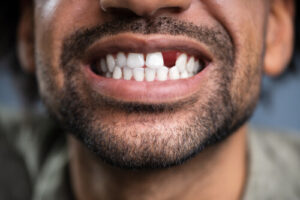
Flipper teeth are just one of several dental restoration options available to those who have already lost one or more teeth. Understanding how they compare to other solutions can help individuals make informed decisions based on their needs, preferences, and financial considerations.
Immediate Provisional Solution vs. Long-term Stability: Flipper teeth are primarily used temporarily while awaiting a more permanent restoration, like dental implants or fixed bridges. Unlike flippers, implants, and bridges offer long-term stability and durability but require a greater initial investment and often a longer treatment timeline.
Cost Comparison: Flipper teeth are generally the most affordable upfront option compared to other dental restorations. Dental implants and bridges, while more costly, provide a better return on investment in terms of longevity and reduced need for future dental work.
Aesthetic and Functional Considerations: While flipper teeth can aesthetically replace missing teeth, they don’t offer the same level of function as dental implants, anchored into the jawbone, and function like natural teeth. Fixed bridges also offer better functional outcomes than flippers because they are more secure.
Impact on Oral Health: Dental implants are currently the only tooth replacement option that helps preserve and stimulate natural bone growth, which can prevent bone loss and maintain facial structure. Flipper teeth, while convenient, do not support bone health and can sometimes lead to gum or bone deterioration if used long-term.
Maintenance and Care: Flipper teeth require daily removal and cleaning, which can be more cumbersome than care routines for fixed bridges or implants that are cleaned like natural teeth.
Treatment and Recovery Time: Getting dental implants can involve several months and multiple appointments, including time for the jawbone to heal around the implant. In contrast, flipper teeth can be made quickly and placed immediately after tooth extraction, providing an instant cosmetic solution.
Each dental restoration option comes with its own set of benefits and limitations. Flipper teeth offer a quick, cost-effective temporary solution for tooth loss, making them ideal for immediate needs. However, dental implants or fixed bridge bridges might be more appropriate for those seeking a more permanent, functional, and health-promoting solution. Discussing all available options with a dental professional is crucial to making the best choice for your long-term dental health and lifestyle.
What to Expect During the Transition to Permanent Dental Solutions
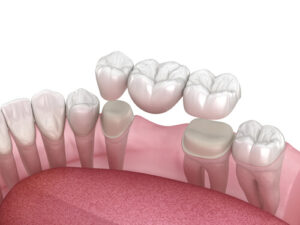
Transitioning from temporary solutions like flipper teeth to permanent dental restorations is a significant step in dental care. Understanding what to expect during this process can help patients mentally and physically prepare for the changes and ensure a smooth transition.
- Consultation and Planning: The journey to permanent dental solutions begins with detailed consultations. Your dentist will assess the health of your gums, existing teeth, and bone structure. This assessment will help determine the most suitable permanent options, such as dental implants, bridges, or dentures.
- Preparation for Permanent Solutions: Depending on the chosen method, preparation might involve several steps. This could include bone grafting for dental implants with insufficient bone volume. Adjacent teeth must also be prepared to serve as anchors for bridges.
- Healing and Adjustment Periods: Each type of permanent restoration has its own healing and adjustment periods. Implants require several months to integrate with the jawbone—a process known as osseointegration—before the final crown can be attached. Bridges and dentures might require less time but still involve an adjustment period for the mouth and gums to adapt.
- Phased Treatment Approach: In many cases, the transition isn’t immediate. It may be phased over several months to allow for healing and ensure each step is successful. During this time, your temporary solution, like a flipper tooth, may still be used.
- Final Fitting and Adjustments: Once the permanent dental solutions are ready to be placed, final fittings and adjustments will ensure they fit comfortably and functionally. This might require several visits to perfect the fit and bite alignment.
- Post-Procedure Care and Maintenance: After the permanent solutions are in place, understanding how to care for them is crucial. Your dentist in Bella Vista will provide detailed care instructions. Regular check-ups are necessary to monitor the new restorations and overall oral health.
Transitioning to permanent dental solutions is a comprehensive process that involves careful planning, multiple steps, and adjustment periods. Knowing what to expect can help alleviate concerns and contribute to a more positive outcome. With the right preparation and care, permanent dental restorations can provide long-lasting benefits and significantly improve quality of life.
In conclusion, a front teeth flipper tooth after extraction provides a functional and aesthetic temporary solution as you transition towards a more permanent dental restoration. By understanding how to care for and manage a front tooth flipper tooth, you can maintain your smile and oral health confidently while preparing for the next steps in your dental journey.
References
Flipper Tooth (Partial Denture) Benefits, Drawbacks, Costs, and Care
https://www.healthline.com/health/what-you-need-to-know-about-maintaining-a-partial-denture-also-known-as-a-flipper-tooth
Dentures (false teeth dental implant) – NHS
https://www.nhs.uk/conditions/dentures/
Immediate fixed partial denture after tooth extraction in patients with systemic diseases: A clinical report
https://www.ncbi.nlm.nih.gov/pmc/articles/PMC5179491/
Dental Bridges: Types & Who Needs Them
https://my.clevelandclinic.org/health/treatments/10921-dental-bridges
Medicaid Adult Dental Benefits Coverage by State
https://www.chcs.org/media/Medicaid-Adult-Dental-Benefits-Overview-Appendix_091519.pdf

